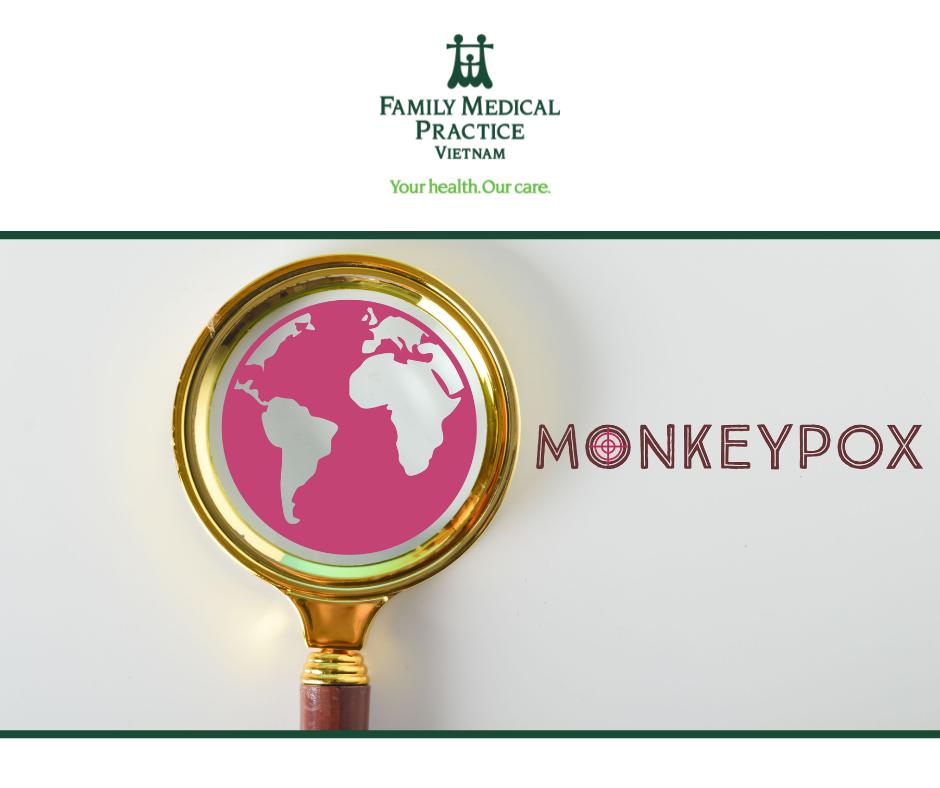Monkeypox - What is it?

What is Monkeypox?
Monkeypox is a viral zoonotic disease that has until recently, occurred primarily in tropical rainforest areas of central and west Africa and has occasionally been exported to other regions.First recognised in DRC 1958 as a zoonotic infection ( from squirrels,rats, dormice, monkeys). First reported case in 2003 in the USA and 2018 in the UK but since early 2022, it was worldwide recognized with rapid spread around the globe. There are two distinct genetic ‘clades’ of the monkeypox virus: the central African (Congo Basin) clade and the west African clade. The Congo Basin clade has historically caused more severe disease and was thought to be more transmissible.
This virus is transmitted from one person to another by close contact with lesions, body fluids, respiratory droplets and contaminated materials such as bedding. Monkeypox is usually a self-limited disease with the symptoms lasting from 2 to 4 weeks. Severe cases can occur. In recent times ( Africa), the case fatality ratio has been around 3–6%. However in the USA for example there has been over 18,000 cases of Monkeypox ( End of August 2022) and so far only 1 attributable death to date to the disease,
Clinical Presentation of Monkeypox
The clinical presentation of monkeypox resembles that of smallpox, a related orthopoxvirus infection which was declared eradicated worldwide in 1980. Monkeypox is less contagious than smallpox and causes much less severe illness.
The incubation period (interval from infection to onset of symptoms) of monkeypox is usually from 6 to 13 days but can range from 5 to 21 days.
The infection can be divided into two periods:
Invasive: (lasts between 0–5 days) characterized by fever, intense headache, lymphadenopathy (swelling of the lymph nodes), back pain, myalgia (muscle aches) and intense asthenia (lack of energy). Lymphadenopathy is a distinctive feature of monkeypox compared to other diseases that may initially appear similar (chickenpox, measles, smallpox)
Eruptive: Usually begins within 1–3 days of appearance of fever. The rash tends to be more concentrated on the face and extremities rather than on the trunk. It affects the face (in 95% of cases), and palms of the hands and soles of the feet (in 75% of cases). Also affected are oral mucous membranes (in 70% of cases), genitalia (30%), and conjunctivae (20%), as well as the cornea. The rash evolves sequentially from macules to papules and vesicles to pustules and finally crusting. The number of lesions varies from a few to several thousand. In severe cases, lesions can coalesce until large sections of skin slough off.
Again worth repeating, Monkeypox is usually a self-limited disease with the symptoms lasting from 2 to 4 weeks.
Severe cases occur more commonly among children and are related to the extent of virus exposure, patient health status and nature of complications. Underlying immune deficiencies may lead to worse outcomes. Although vaccination against smallpox was protective in the past, today persons younger than 40 to 50 years of age (depending on the country) may be more susceptible to monkeypox due to cessation of smallpox vaccination campaigns globally after eradication of the disease.
Vaccination for Monkeypox
Who Should Get Vaccinated?
Currently, CDC is not encouraging vaccination ( August 2022) against monkeypox for the broader public or for everyone who is sexually active
BUT you may want to get vaccinated if:
You have been identified as a close contact of someone with monkeypox.
You learn that one of your sex partners in the past 2 weeks has been diagnosed with monkeypox.
You have had sex at an event, venue, or in an area where monkeypox transmission is occurring.
Vaccines used during the smallpox eradication programme also provide protection against monkeypox. Newer vaccines have been developed of which one has been approved for prevention of monkeypox
The smallpox MVA-BN vaccine: Brand name JYNNEOS (FDA approved) or IMVANEX (MRHA - UK approved) is administered as a live attenuated virus (that is non-replicating). It is administered as two subcutaneous injections four weeks apart. There is no risk for spread to other parts of the body or other people. People who receive JYNNEOS TM are not considered vaccinated until 2 weeks after they receive the second dose of the vaccine. Thought to be about 85% effective against Monkeypox. This vaccine may also be given intradermally.
A second vaccine ACAM2000 which is a live Vaccinia Vaccine has been stockpiled but is not available yet. It may be released for use if the disease spreads more aggressively in the future.
Antiviral Agents
An antiviral agent known as Tecovirimat that was developed for smallpox was licensed by the European Medicines Agency (EMA) for Monkeypox in 2022 based on data in animal and human studies for the treatment of Monkeypox. Also the FDA has approved this agent, but It is not yet widely available.
 本ウェブサイトでは、みなさまが快適にご利用いただけるよう、Cookieを使用しています。
本ウェブサイトでは、みなさまが快適にご利用いただけるよう、Cookieを使用しています。